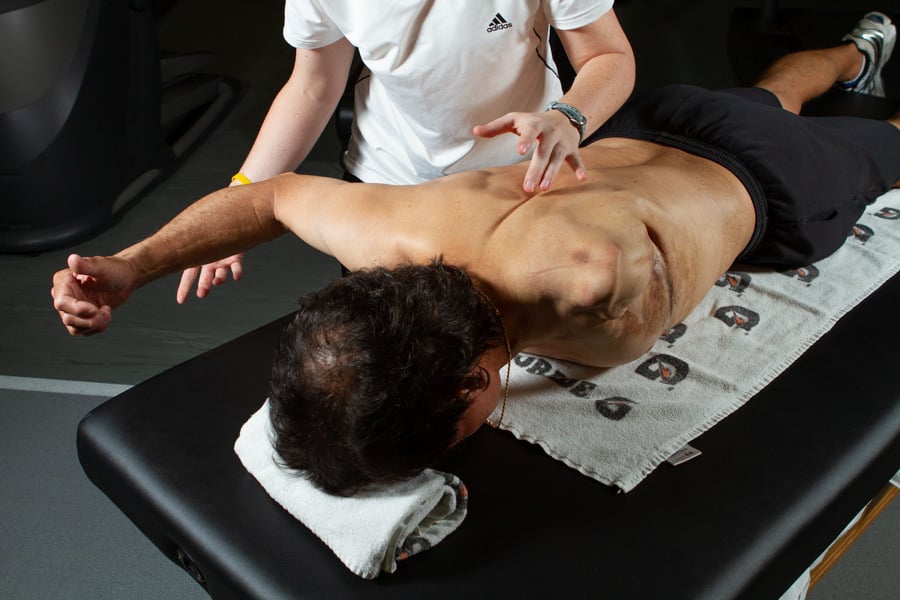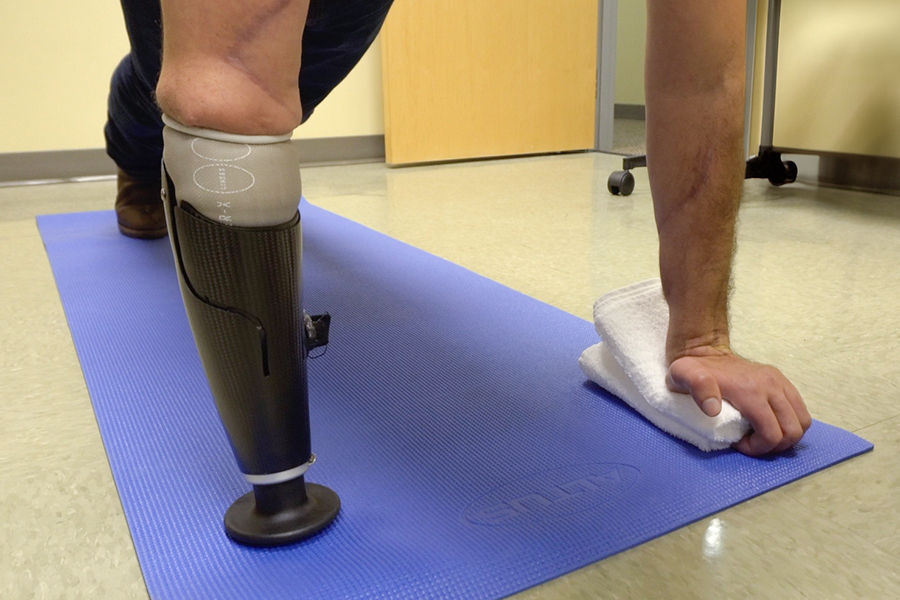Whether it is deep breathing, guided imagery, meditation, prayer or progressive muscle relaxation, you may find that one or more of these techniques may help your body and mind to relax, which can positively impact both physical and psychosocial health. Combing the above suggestions with other clinical techniques as recommended by a health care professional can lessen the pain you experience after an amputation.
The first thing we recommend is to find someone or something to help guide you through these practices. You may find that a therapist is best suited to help you. Or you may discover that a fellow amputee can give you advice about what helped them the most — our Arm Dynamics peer support network, or other support group, can help you connect with your fellow amputees. You also may find that books that specifically address recovering from trauma are what you connect to the most. What’s important is to find help that is at least loosely tailored to what you have gone through.
At our Arm Dynamics centers, we use a patient screening tool called The Wellness Inventory. It’s presented in a question and answer format by a clinical therapy specialist. The screening was developed as an extension of our holistic care model, which addresses the physical, psychological, social and occupational concerns of people with upper limb loss or congenital limb difference. After assessing our patients, our therapists assist them in locating additional support when needed as part of our goal to help our patients overcome obstacles in their prosthetic rehabilitation.
Deep Breathing
This can be a simple place for any individual to start. Some basic tips are to find a comfortable place to sit or lie down. Close your eyes. Breathe through your nose for a count of three (or four, or five). Then breathe out through your mouth for the same count. You can find more tips for deep breathing on WebMD.
Meditation
The New York Times has published an in-depth guide to meditation that you may find helpful. Something to keep in mind, though, is that, if you have had a traumatic amputation, you may need some help with guidance while meditating. In this article from the University of Washington, Jane Compson, assistant professor in interdisciplinary arts and sciences at UW Tacoma, writes that: “[…]some people can end up being retraumatized by traumatic memories that come up while they’re meditating, and that can cause harm.”
Progressive Muscle Relaxation
This is a technique where you slowly tighten and relax each muscle group in your body. The idea is that you may be carrying stress in different parts of your body, and that by going through and thinking about each part of your body, you will be relaxed overall by the end of the exercise. You can find specific steps and more relaxation ideas in this Mayo Clinic article.
Keep in mind that throughout your journey of recovery, there are many tools available. Relaxation and meditation can be part of the solution to deal with pain and process trauma, but other solutions include more active approaches such as writing in a journal, speaking with a friend, spending some time in nature or taking a long walk. You may need different tools for different times in your process of recovery — meditation may help you process feelings of sadness, but journaling may help you process feelings of anger. You will discover what works best for you through trial and error, and patience with yourself. Having all these techniques available and at your disposal will hopefully help you lessen your pain and help you recover faster.
If you would like to discuss how our occupational and physical therapists can help you minimize and manage pain, please contact us.
What are your favorite relaxation techniques? Or what did we miss in our suggestions above? Please let us know in the comments.







%20President%20and%20Senior%20Clinical%20Director.jpg?width=600&height=600&name=John%20M.%20Miguelez%2c%20CP%2c%20FAAOP(D)%20President%20and%20Senior%20Clinical%20Director.jpg)










No Comments Yet
Let us know what you think